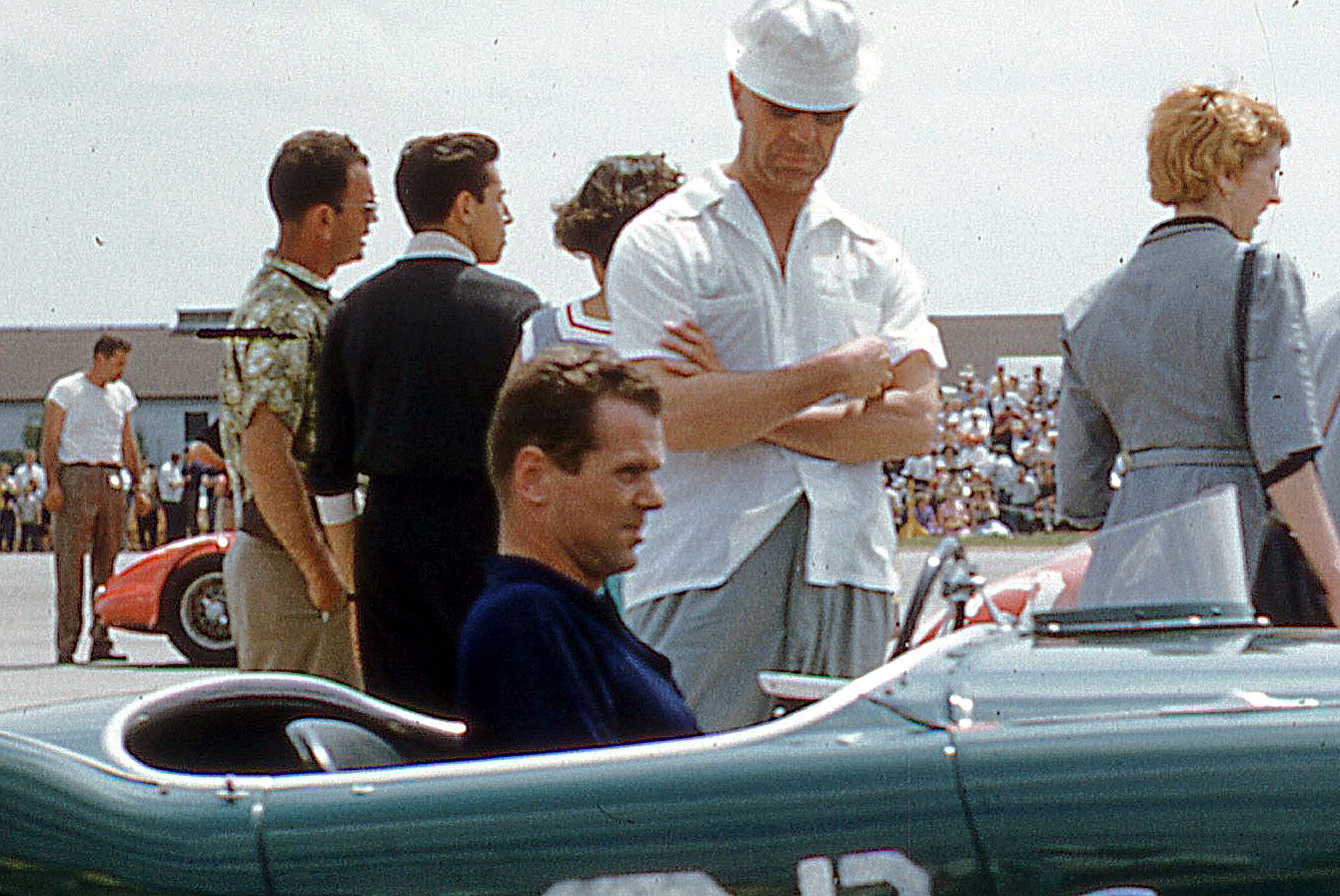
Jackie Cooper at the SCCA Nationals at Westover NY on June 13, 1954. Photo copyright Robert F. Pauley and used with permission.
By Pete Vack
In 1951, a 30 year old Hollywood actor named John Cooper, Jr, aka Jackie, was driving from Los Angeles to New York City in his Jaguar XK120. Thoughts of his long lost father often crossed his mind as he drove the lonely miles across America. When John Jr. was still a toddler, John Cooper Sr. walked out on the family and simply disappeared. The strange loss of his father had a major negative impact on the actor. But life moves on and he kept on driving.
Somewhere outside of Kansas City, MO, it began to rain and the wind tore the top off the Jag. Soaking wet, Cooper drove through town and happened to find an upholstery shop that also repaired convertible tops.
Thankfully, a man came out to help and offered to make a new top for the Jag, and went right to work on the task. After an hour or so, the craftsman took a break and looked at Cooper. “Say, you’re Jackie Cooper, aren’t you?” Cooper admitted to being the Hollywood star.
The man thought for a minute and then told Cooper to look outside, pointed to an apartment window with a light and curtain. “Your father lives right up there.”
And so with this bit of Hollywood drama, Cooper begins his 1981 autobiography, “Please Don’t Shoot My Dog.” Probably mostly forgotten now, Cooper (1922-2011) was one of the first child stars, establishing a career which began with the silent era and spanned right up to the 1980s on the stage, screen and TV. In the early and mid 1950s, Cooper was a presence at many SCCA events and participated in over 17 race events. Cooper was one of the more active Hollywood star racers until Steve McQueen hit the scene a decade later. We might add that movie stars such as Clark Gable and McQueen were often under contract to a major studio and were not allowed to risk their lives racing automobiles. In the years that Cooper raced, he was not under contract to any major studio.
Born and raised in Hollywood near the Universal Studios, Cooper admitted that as a youth he liked cars, girls and horses, roughly in that order. He could afford it. Only six years old, his grandmother took him to the studios everyday to get parts as extras, and before long he was getting more parts, urged on by both his mother and grandmother, who desperately needed money. The kid had talent, could sing, and did what he was told. In 1930, still only eight years old, starring in the movie “Skippy” he attained super stardom, followed by “The Champ.” In the early 1930s during the Great Depression, he was averaging $1500 a week (roughly $25000 in today’s money according to a variety of sources) as a child star, at a time when the unemployment rate was almost 25 percent.
He knew he was lucky, fortunate, but as a child actor he didn’t lead a normal life. One result was that he never became interested in team sports, excelling at individual sports, such as auto racing and boxing.
In those days in California one obtained a driver’s license at fourteen, and for Cooper that came along with a new Ford, courtesy of Ford in 1934. He was given an allowance of $5 a week, and was able to save enough to buy modification parts for the car without asking his mother for money from his account. But soon he persuaded his mother to buy him a Lincoln Zephyr, quite a step up from the Ford. Alas, the war was coming and Cooper did a stint with the U.S. Navy until the war was over.
Toly Arutunoff remembered Cooper. “He was a friend of my brother and brother-in-law when my family had a fantastic home up Beverly Glen Boulevard and in the late ‘30s my brother was on the high school polo team. He had a nose operation to fix his breathing after Jackie caught him across the bridge of his nose with a polo mallet. I wish I’d known about Jackie’s car hobby when I met him in about 1973 and he fixed me up with a lovely date named Jeannie who had a Rambler Marlin.”
His interest in sports cars really took hold in 1949 while Cooper was playing in the smash hit Broadway show “Mr. Roberts” in London. He fit right into the British way of life, and bought himself a new Jag XK120 and an MG for his then wife Hildy Parks. “I loved playing with it, tuning it, fiddling with it, even changing its tires,” he wrote. In the play with him was Tyrone Power, who, as Jim Sitz recalls, drove a Duesenberg once owned by Howard Hawks. Power’s girlfriend and later wife was Linda Christian, who would later give Portago his last kiss during the 1957 Mille Miglia. “No one liked Linda Christian” recalled Cooper. He didn’t say why.
Soon the show folded in London and he and Hildy participated in the 1951 Sestriere Rally, an event plagued by snowstorms. Strangely enough, Cooper takes three pages to describe his misfortunes at the hands of the weather and the locals. He had no snow tires or chains and was not happy with the results. In his autobiography, Cooper states that the event was held in March. We did some checking. According to V1 Number 1 of the magazine Autocourse, The Rallye Automobilistico Internazional Del Sestriere, won by Alberto Ascari in a Lancia, was held February 23-26 1951, and despite the differing dates, must be the event referred to by Cooper. However, despite a listing of 84 finishers, no Jackie Cooper was found. We can only assume his misfortune ended in a DNF. We checked further and found a very complete report on the event written by Count Gianni Lurani in Auto Italiana. He mentioned the bad weather, but nothing about an American movie star with a Jag XK120.
One might assume that event promoters might be interested in spotlighting the entry of a famous American movie actor driving one of the most desirable cars of its era. So why no mention? Perhaps it is because by that time, Cooper was no longer a Hollywood star, his movies were 15 years old and even his roles in the Our Gang comedies were old news.
Despite the lack of success in the rally, he kept the Jag, shipped it to California where he entered it at Pebble Beach on May 27th 1951 and placed 6th in the Cup race. At some point, Cooper was contacted by Road & Track, presumably by then-editor Oliver Billingsley, who asked him to write about his experiences with sports cars. It probably didn’t pay as much as Broadway, but he was allowed two full pages in the March, 1952 issue to describe his purchase of the Jag in England and his participation in the Sestriere Rally. Cooper went on about driving in the UK and picking up the MG and Jag, and told a slightly different story about the Rally but with the same uncertain results. The article did publish a photo of the couple with the XK 120 at a stop in the rally, which we scanned and apologize for the quality. However, it’s the only photo of the Jag we have managed to locate.
Back in LA, his career was going nowhere, so he decided to drive the Jag to New York to continue a career on Broadway. It was on this trip to New York that he almost had a meeting with his father.
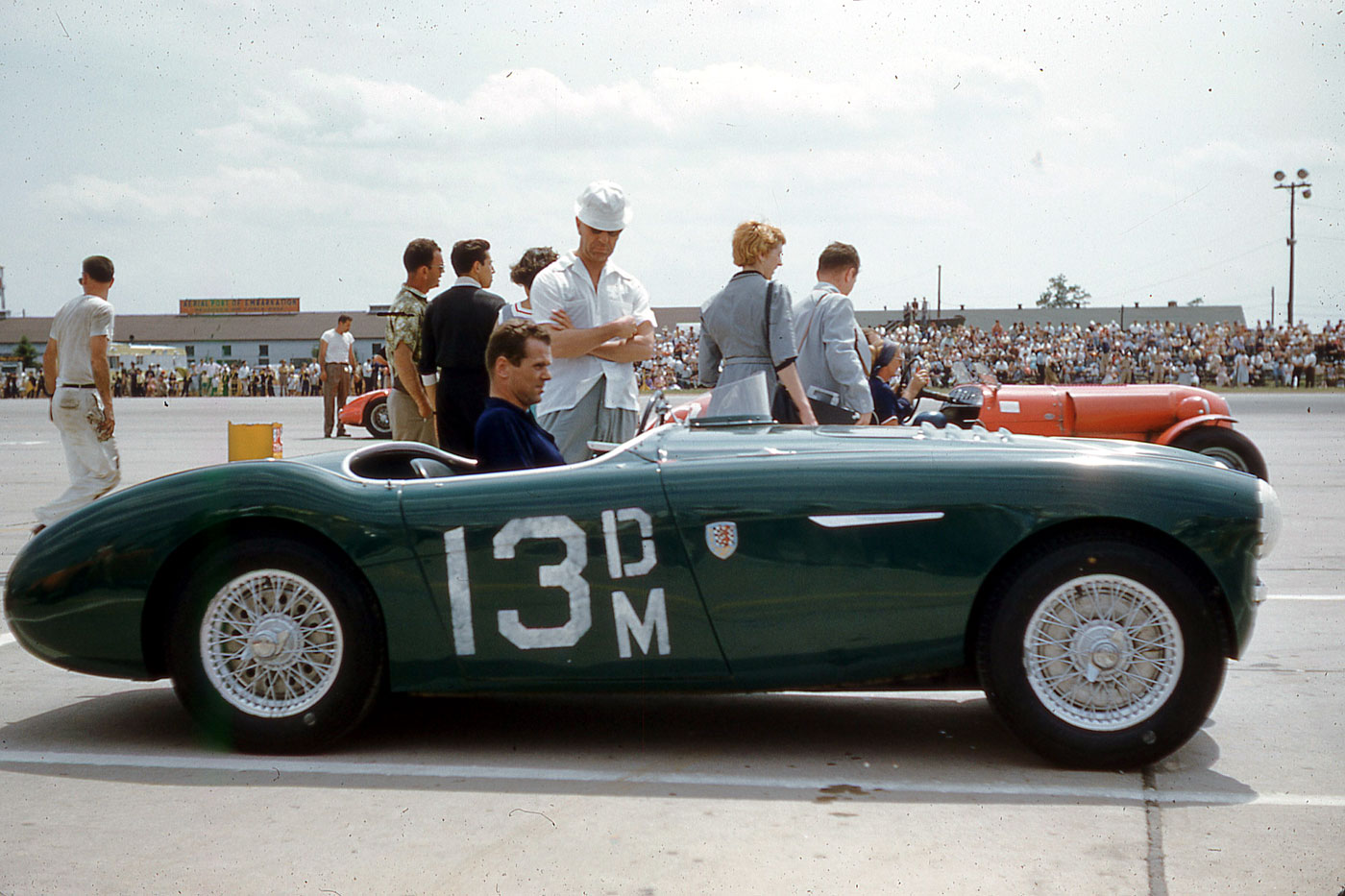
An uncropped photo of Cooper and the Austin Healey at Westover NY on June 13, 1954. Photo copyright Robert F. Pauley and used with permission.
His stage career was successful, and he did a lot of the live TV shows that were originating from New York at the time. Out East now, he joined the SCCA, and began going to sports car races. Ironically, Cooper also found success racing sports cars on the East Coast, not the more active West Coast. We don’t know what happened to the Jag. But in early 1954, Cooper bought an Austin Healey 100 and went racing; May 5 at the SCCA Regional, Suffolk County NY, May 30, Thompson, CT, June 13 Westover, August 8, Nationals at Lockbourne, September 5 Nationals at Thompson, September 18, Watkins Glen, and ended the season with a 7th in class at Thompson on October 10. Results were marginal but Jackie Cooper was becoming an experienced race driver.
His racing experience was paying off, and he ordered a new Austin Healey, this time the top of the line 100 S model, and entered the 12 Hours of Sebring.
Cooper could have really excelled at Sebring, and in a way, did. It’s just that few noticed. He was driving in a quasi-factory Austin Healey team, with co-driver Roy Jackson-Moore, in one of seven 100 S Healeys to enter the race. Cooper had taken delivery of the limited production race ready Healey right before Sebring. According to some reports, an electrical problem left Cooper stranded, and he pushed the Healey more than a mile to cross the finish line, coming in 41st in the official results, completing 131 laps. Stirling Moss and Lance Macklin in the official factory 100S finished a remarkable 6th overall, and in his autobiography, Cooper has a photograph with himself, Moss, Macklin and Jackson-Moore but no mention of the event in the text. Belatedly, in December 1955 Sports Cars Illustrated honored Cooper as “Sportsman of the Month” but did not say why.
In fact, and strangely enough, Cooper makes no mention at all of the Austin Healeys, or SCCA racing in 1954 or 1955, despite strong showings and a very positive effort. He took the Healey to Thompson at the end of May, placing 7th in class, a trip to Canada for an event at Edenvale in June, and on July 4th at the SCCA Nationals at Beverly, he placed 14th. Not much to write home about, but consistent with no accidents.
Cooper was beset by ulcers, going through a divorce and making the move from New York back to Hollywood. By the end of 1956, he was through with racing. ‘When you start being too careful, it’s time to quit,” he wrote.
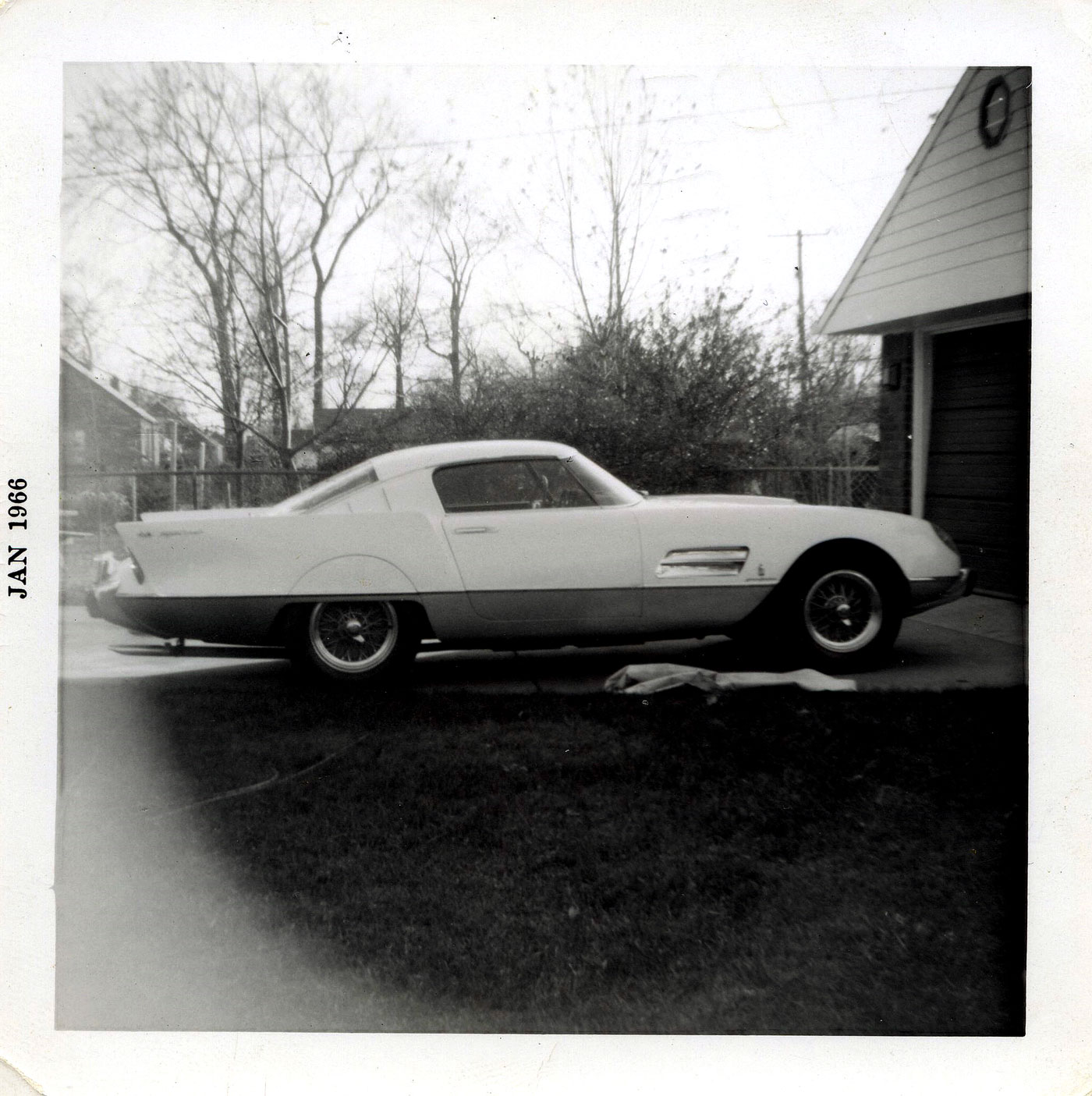
410 Superfast I Farina coupe (ex-Jackie Cooper) 0483SA when owned by Dick Merritt. Photo courtesy Kendall Merritt.
Then he went out and bought himself a Ferrari, the very top of the line 410 SA Superfast s/n 0483SA. He bought the 1956 Paris Show car from William Doheny, and sold it to collector John Delameter who in turn let it go to Dick Merritt in the mid 1960s.
And as they say in Tinseltown, that’s all, folks!


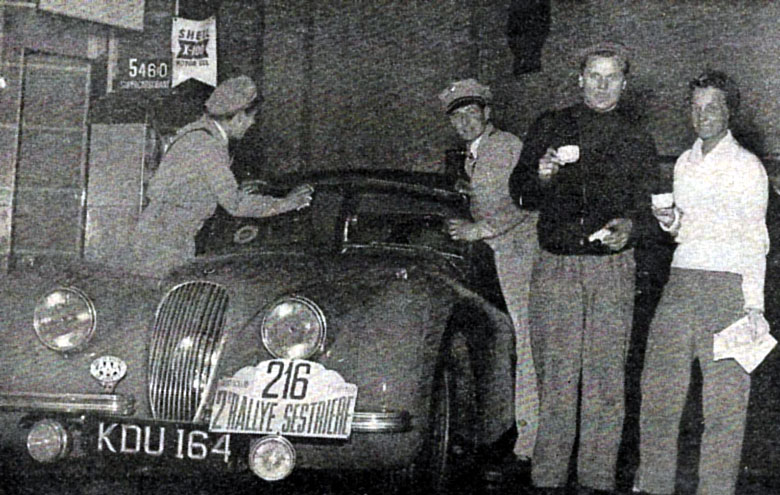
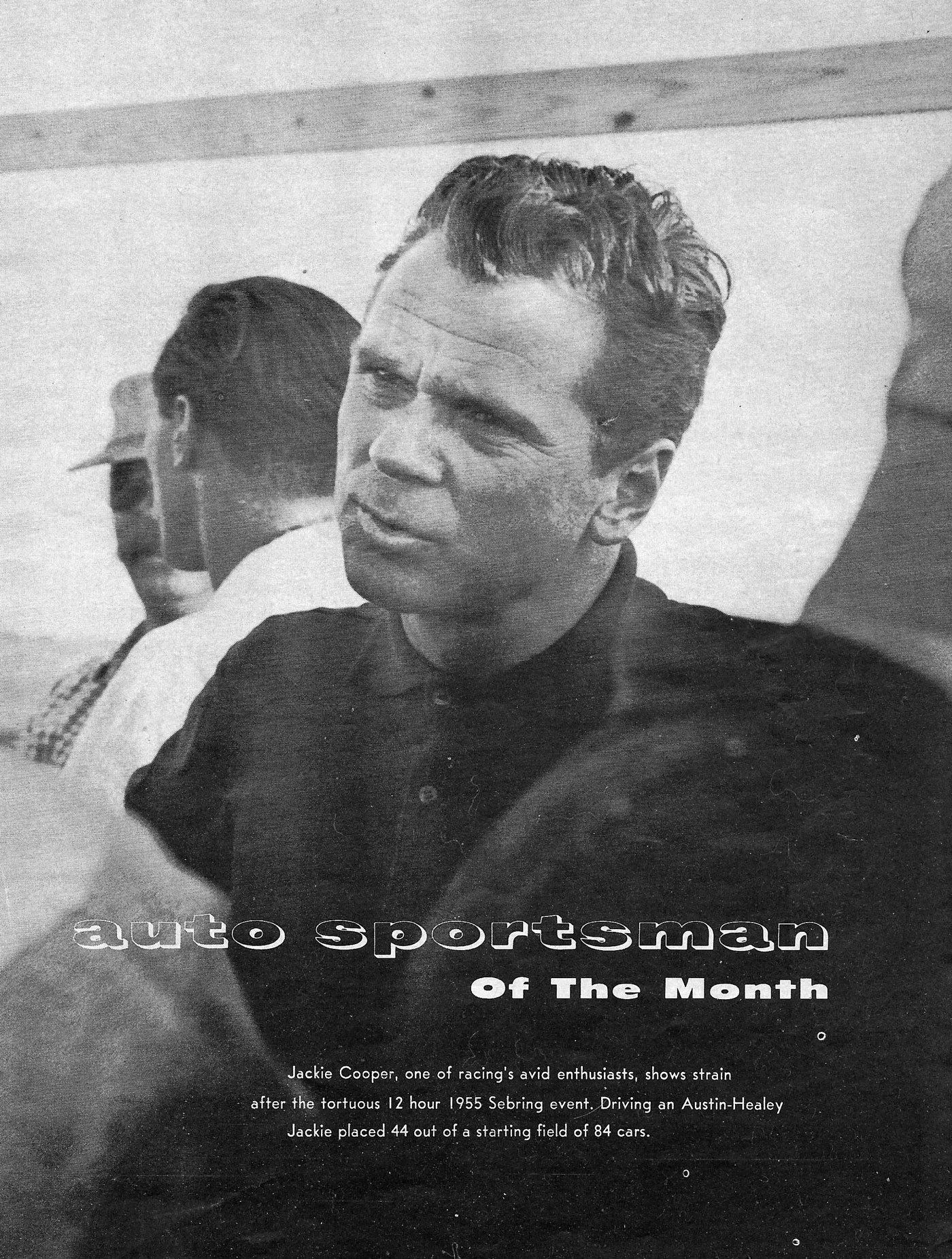
Hi Pete:
Cooper did compete at the Edenvale track and Canadian racer Francis Bradley and his wife dined with Cooper at the post race banquet. I think that was the only time Jackie Cooper raced in Canada. Francis went on to become Canadian Champion in 1961(?) and is in the Canadian Motorsports Hall of Fame.
Cheers,
John Wright
PS. The Sadler book is back on track after a hiccup or two. Publication by Christmas, fingers crossed.
In 1973 I ran a Volvo 122S at Ontario Motor Speedway in the 4 hour IMSA Radial Challenge pro series race. After the race was over, I saw my Mom sitting at the track bar with an older man. She said that she had talked to him throughout the race as she watched me compete. Turned out that guy was Jackie Cooper. And until today, I did not realize that he was involved in sports car racing…….
He attended Notre Dame,
Had been gone a couple of years before my arrival in 1945!
Marshall Robilio, class of 1949.
Great story Pete and thanks for bringing in to us. However, that “can’t be all folks” as you’ve left me hanging with “… It was on this trip to New York that he almost had a meeting with his father.” Did he ever reunite with his father?
I know, that was rotten.
Cooper refused to see his dad and never was reunited with him.
Jackie Cooper was enlisted as a driver by Donald Healey in the endurance record runs in a stock Austin Healey 100 in 1953. Geoff Healey intimates in his book that it was partially for publicity value, but he would have been also deemed fully capable. It would be my guess that experience may have led Cooper to buy the 1954 100. Photos and more information about Cooper and the 100S at Sebring is located here: https://mossmotoring.com/star-born-jackie-coopers-healey-100s/ Nice piece!